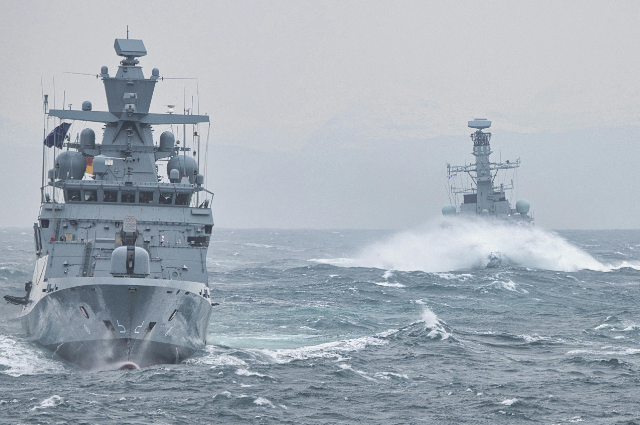
Introduction
In recent years, tensions have surged across the East and South China Seas, two of the most strategically important and contested waterways in the world. These waters have become the backdrop for power politics, territorial disputes, and military provocations involving some of the globe's most significant players—China, the U.S., Japan, and several Southeast Asian countries. What lies beneath these tensions is a complex mix of historical grievances, military ambitions, and economic interests.
1. The Geopolitical Importance of the East and South China Seas
The East and South China Seas are critical to global trade and military strategy. Together, they carry more than a third of global maritime traffic and house vast underwater resources, including fisheries, oil, and natural gas. Additionally, they are pivotal military arenas for power projection, particularly for China, which views control over these waters as essential to its broader strategic objectives in the Indo-Pacific.
2. Historical Claims and the Roots of Conflict
China’s territorial claims are rooted in historical narratives dating back to ancient times, which Beijing often cites as justification for its control over various islands and reefs. However, these claims often conflict with those of other nations, which have their own historical ties to the waters and the islands within them. For instance, China insists that the Senkaku/Diaoyu Islands in the East China Sea—currently under Japanese control—belong to China. Multiple diplomatic and military crises have erupted over these islands, with both sides refusing to back down.
3. The Recent Flare-up: What Has Led to Escalation?
Tensions in both seas have been simmering for years, but several key events have led to a recent flare-up. In March 2024, members of the Philippine Coast Guard found themselves blocked by a Chinese Coast Guard vessel during a resupply mission to Second Thomas Shoal in the South China Sea. This incident is emblematic of China’s increasingly assertive posture, as it seeks to prevent other countries from establishing a foothold in the waters it claims.
4. Why China Sees Its Claims as Defensive Actions
From China’s perspective, its actions in the East and South China Seas are defensive in nature. Beijing argues that these territories have always belonged to China, and that it is merely reclaiming what is rightfully theirs. Chinese officials frequently point to historical maps and records as evidence that the disputed islands and waters have been under Chinese control for centuries.
5. Why Regional Countries View China’s Actions as Provocative
For the regional countries, however, China’s actions are anything but defensive. Nations like Vietnam, the Philippines, and Japan view China’s military buildup, island construction, and harassment of their ships as clear violations of international law. They fear that China’s growing influence in these waters will lead to a loss of sovereignty and access to vital resources.
6. The Role of the U.S. in the Conflict
The U.S. has long been drawn into the conflict in both the East and South China Seas due to its security commitments to allies like Japan, the Philippines, and South Korea, as well as its broader interest in maintaining freedom of navigation in international waters. The U.S. views China’s territorial claims and military expansion as a direct challenge to the international order and has responded by conducting freedom of navigation operations (FONOPs) in both seas.
7. China’s Military Strategy: A Two-Pronged Approach
China’s strategy in the East and South China Seas can be viewed as a two-pronged approach: one of slow, incremental expansion, and another of deterrence. By slowly building up military assets, China aims to gradually change the status quo without provoking a full-scale conflict.
8. Responses from Regional Countries
Regional countries have responded to China’s actions in various ways. Japan has increased its defense budget and is enhancing its security ties with the U.S. and other allies. It has also taken a more assertive stance on the Senkaku/Diaoyu Islands, regularly deploying its coast guard and navy to deter Chinese incursions.
9. The Legal and Diplomatic Front
Diplomatically, countries have sought to resolve the disputes through negotiations and international legal mechanisms. However, China’s refusal to recognize the 2016 ruling by the Permanent Court of Arbitration has made this avenue challenging.
10. What Lies Ahead?
The future of the East and South China Seas remains uncertain. While there are mechanisms in place to prevent escalation, the potential for miscalculation or accidental conflict remains high. China shows no signs of backing down from its territorial claims, and regional nations are increasingly aligning with the U.S. to counter China’s influence.
Conclusion
In conclusion, the East and South China Seas remain highly contested regions, where historical claims, economic interests, and military power collide. While China views its actions as a means of safeguarding national interests and asserting sovereignty, regional countries see them as provocative, leading to heightened tensions. The U.S. involvement, driven by strategic interests and commitments to allies, adds another layer of complexity to the situation. Looking ahead, the situation remains volatile.
. . .
References:
- Permanent Court of Arbitration. (2016). The South China Sea Arbitration. https://pca-cpa.org/en/cases/7/
- U.S. Department of Defense. (2023). Freedom of Navigation Operations. https://www.defense.gov/
- Japan Times. (2024). Senkaku/Diaoyu Island Disputes: A History. https://www.japantimes.co.jp/
- Philippine Coast Guard. (2024). Report on the Incident at Second Thomas Shoal. https://www.pcgs.gov.ph/
- ASEAN. (2023). Diplomatic Efforts in the South China Sea Dispute. https://www.asean.org/
